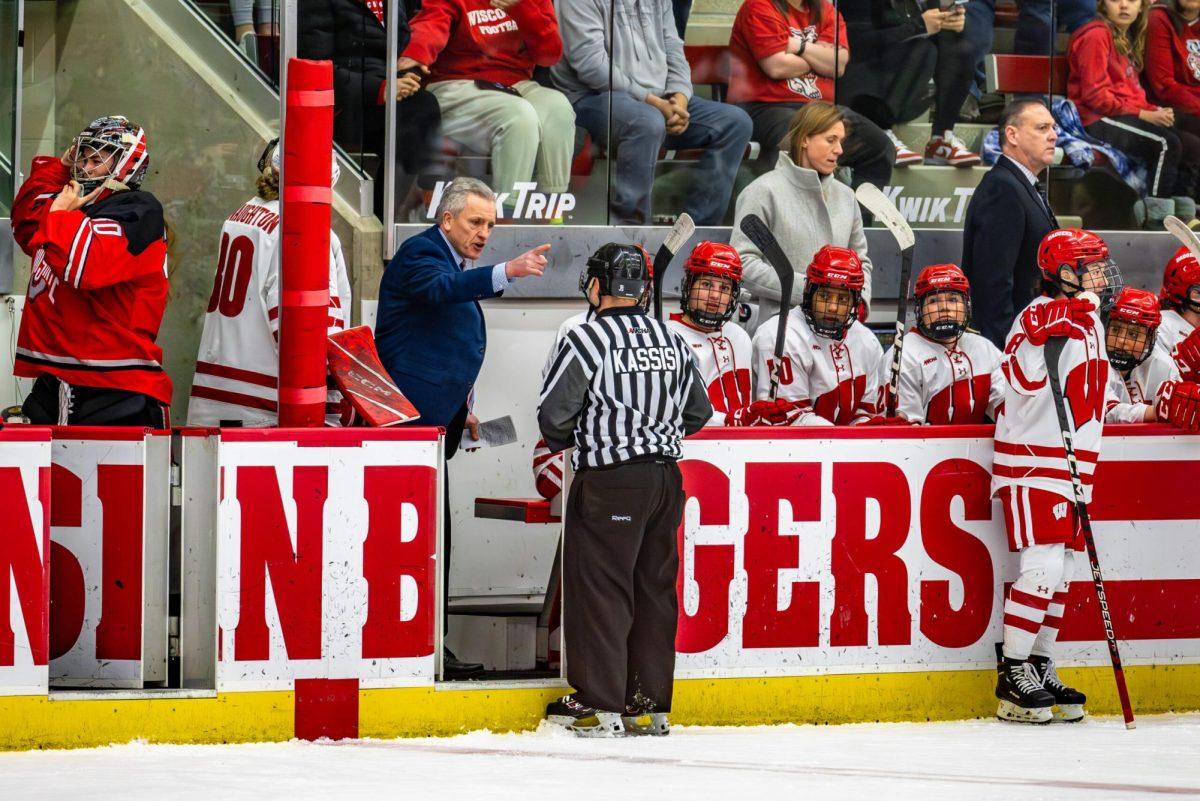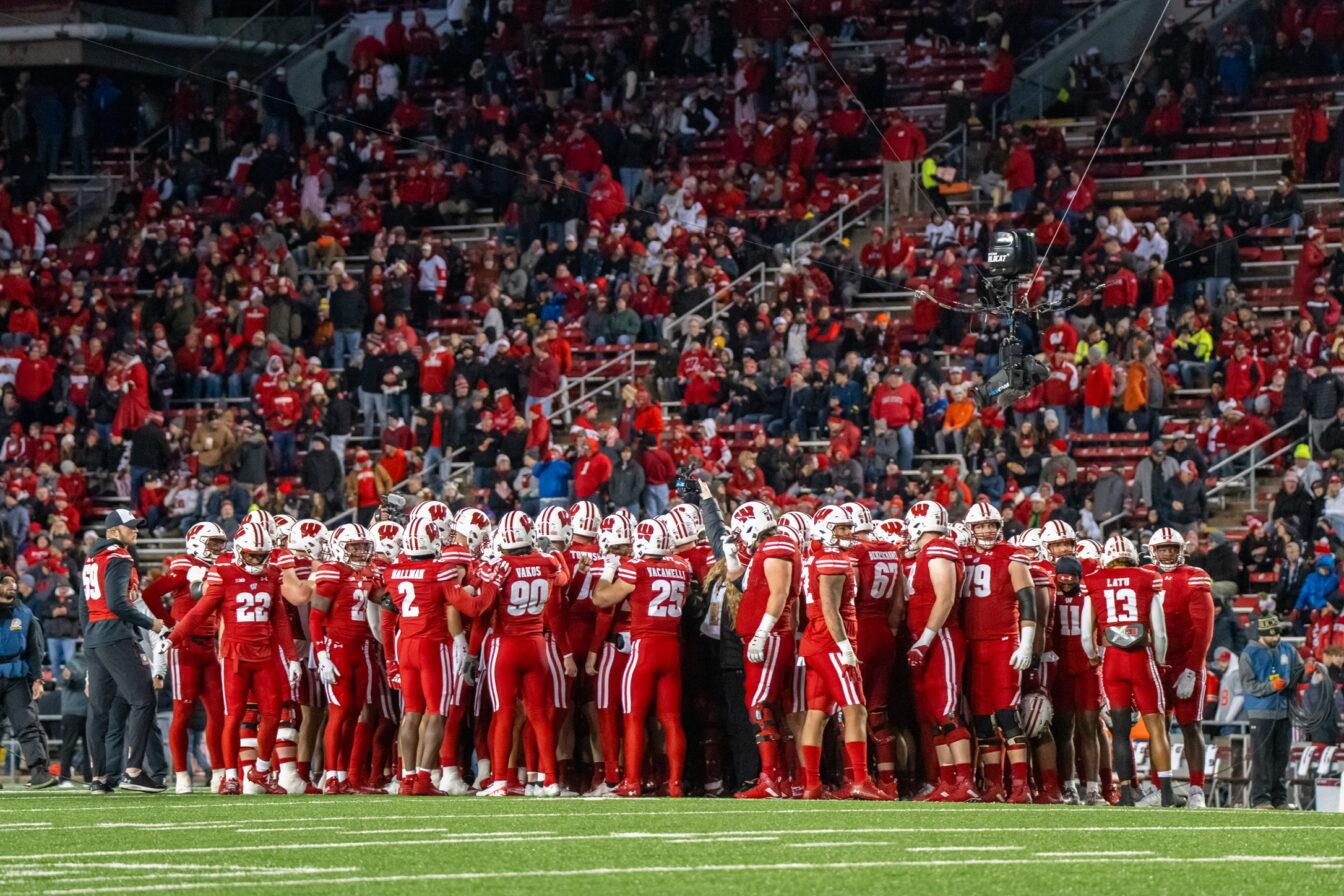When Tamara Moore tells you about the UW women's basketball team’s grueling off-season conditioning program, she speaks about as matter-of-factly as a physicist explaining Newton’s third law.
“We went to this ski slope, and we’d run up the hill,” said Moore, a guard and co-captain of this year’s squad. “It takes a minute and 15 seconds [per] time for a guard. We’d do that four times. And then there was a set of stairs that we’d do, I think it was 250 [stairs], and we'd run up that. The most we did that was 5 times.”
And that was just one part of Monday. On Tuesdays and Fridays the team would scrimmage for a couple of hours. On Thursdays the team headed back to the grassy ski slopes for more uphill, 1,000-stair dashes. Wednesdays were the lone weekday off (yippee!).
According to Moore, this off-season’s program made the last three years’ feel more or less like Swedish rubdowns. All that summer training was meant to whip the Badgers into shape for a season that, at least on the court, will look like no other in recent memory.
Since UW’s unceremonious loss in the first round of last year’s NCAA tournament, Wisconsin head coach Jane Albright has revamped her offense and defense to feature quicker, faster-tempo attacks that will maximize the strengths and hide the weaknesses of this year’s Badger team.
For the past two seasons UW has relied on forwards LaTonya Sims, Nina Smith and current senior Jessi Stomski to outscore and out-rebound opposing defenses.
Past Badger teams sagged into slow, viscous half-court offenses and defenses to maximize the strengths of those three players.
Since last March, however, Sims graduated, and Smith bolted UW for Iowa State. Consequently, UW head coach Jane Albright reprogrammed her 2001 team, which includes faster but smaller players than recent teams, to press opponents on defense and push the ball in transition on offense.
Of course, both styles of play require a great degree of athletic skill. More importantly, though, fast-break offenses and half- and full-court presses require a titanic amount of trust between teammates. For a press to work, players need to know that their teammates will put themselves in the correct court position to force defensive stops or steals.
The same truth holds with outrunning opponents in a fast-break offense. If players don't trust that their floormates will find the correct passing lanes, the offense decays into a puddle of poor shots and missed opportunities.
Luckily for Wisconsin, the coach and the players know that, unlike with recent UW teams, the trust–and the talent–exist in abundance.
“I think my team didn’t think I knew how to coach a press last year,” Albright said. “I mean, where would you have put the starting five last year? You couldn’t have done it. No coach could have done it.”
“We’re going to run and jump a lot, like trap, do a lot of jumping stuff, because we are fast this year.”
If the coach recognizes the team’s athletic gifts, the players have realized the abnormally high level of trust they have in each other. You get the feeling that if Stomski were to close her eyes and fall backwards, Moore would be there to catch her.
“There’s great faith on this team, in each other,” sophomore center Emily Ashbaugh said. “And that’s something that a lot of teams never get, no matter what players you got playing for you. And this is something that I think is rare, and I’ve been on a lot of teams. It’s pretty much the loyalty that everyone has to each other, and the faith that, OK, we can do this.”
Off the court, the Badgers exhibit another characteristic common among successful teams: camaraderie.
“I kind of worry about how much fun I’m having, because I don’t think it's supposed to be this much fun at this level right now,” Ashbaugh said.
However, teams that rely on faith, fun and talent usually die somewhere between the Sweet 16 and the Midwest sub-regional. Champions rely on rebounding, especially offensive rebounding. Champions rely on numbers like the combined 26 points and 13 rebounds that Smith and Sims provided last year. Right now, Wisconsin still needs to find a player–or players–willing to accept that rebounding role.
“That’s probably the thing I’m most worried about replacing,” Albright said. “With LaTonya, she was a great offensive rebounder. I haven’t, during these first few practices, seen anyone committed to being that for us.”
Albright predicts that her new press-and-push philosophy will add 10-15 points per game to UW’s scoring average. She wants her players to force enough turnovers and score enough easy baskets to hide their rebounding deficiencies.
The players say that if that’s what Albright wants, then that’s what this year’s team will give her.
“I think that everybody has the mindset right now that they’re working toward trying to prove that we are a team that can contend with the top of the nation,” Moore said.
Albright characterized her team more succinctly.
“It’s a coach’s dream,” she said.














